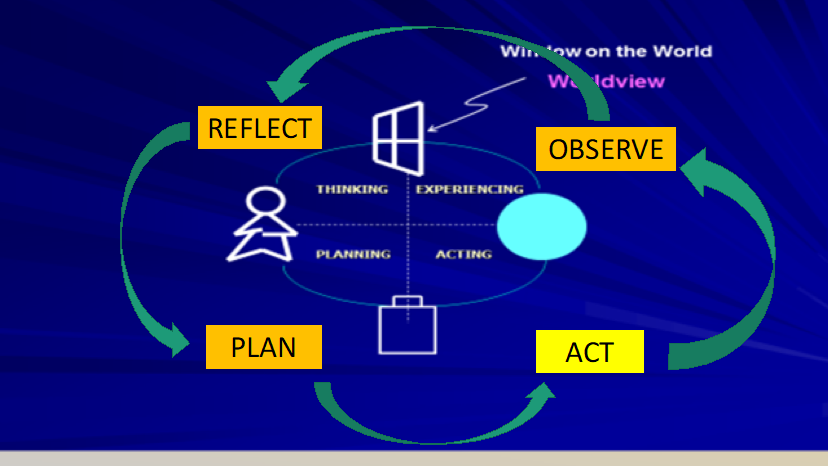- • Action Research is the simultaneous achievement of Action (Change) and Research (Understanding).
- • It follows the Experiential Learning Cycle, so is a special case of experiential learning.
- • The classic description of Action Research is as a cycle of Plan / Act / Observe / Reflect, repeating the cycle as required to achieve understanding and acceptable change.
- • It is cyclic, participative, qualitative and reflective.
- • It is emergent and responsive to actual needs and situations of concern.

- • Its main features are:
- o Cyclic – the steps recur in a similar sequence, which adds to the rigour.
- o Change (Action) – this is the intended result, and this change will depend on the agreement and commitment of those affected by it.
- o Change – is generated and refined in the various cycles of the action research process.
- o Understanding – increase knowledge about the issue of concern.
- o Participative – clients and informants are active partners.
- o Qualitative – it deals with language more than numbers.
- o Reflective – critical reflection on process and outcomes.
- o Responsive – flexible to the needs of the situation.
- o Accessible – works in natural language to be accessible to all participants.
- • A vital feature is critical reflection – recalling and then critiquing (interpretation and evaluation) what happened, since this leads to increased understanding; this understanding is then used to design the next step of planning for the next cycle.
- • It is important to use as many data sources as possible – that is information gained in different ways from multiple sources of evidence within all or most cycles.
- • Vague beginnings can lead to better understanding and practical improvement through the critical analysis of the information, the interpretation of it and the methods used.

